Lexus is entering the battery-electric race in North America with the RZ 450e, an all-new model built on the brand’s first dedicated BEV platform. The mid-size crossover occupies an interesting place in the lineup, with a overall size most similar to the compact NX crossover but a wheelbase closer to the mid-size RX crossover.
Lexus Enthusiast was invited by Lexus USA to tour the French countryside outside of Aix-en-Provence in the new RZ, and our coverage starts with a broad technical overview.
Platform
The RZ is built on the e-TNGA platform alongside its sister vehicle, the Toyota BZ-4X. This is Toyota’s first dedicated Battery-Electric Vehicle platform, and allows engineers to take advantage of BEV characteristics — the RZ is able to have a lower center of gravity and stiffer structure compared to other Lexus vehicles due to the weight and shape of the battery pack under the cabin.

The RZ measures 4,805 mm long with a 2,850 mm wheelbase. Both the front and rear overhangs are shorter than any previous Lexus — 995 mm in the front, 960 mm in the rear. Overall height is 1,635 mm and the width is 1,895 mm. To help visualize all these numbers, best to think of the RZ right in the middle between the NX & RX crossovers.
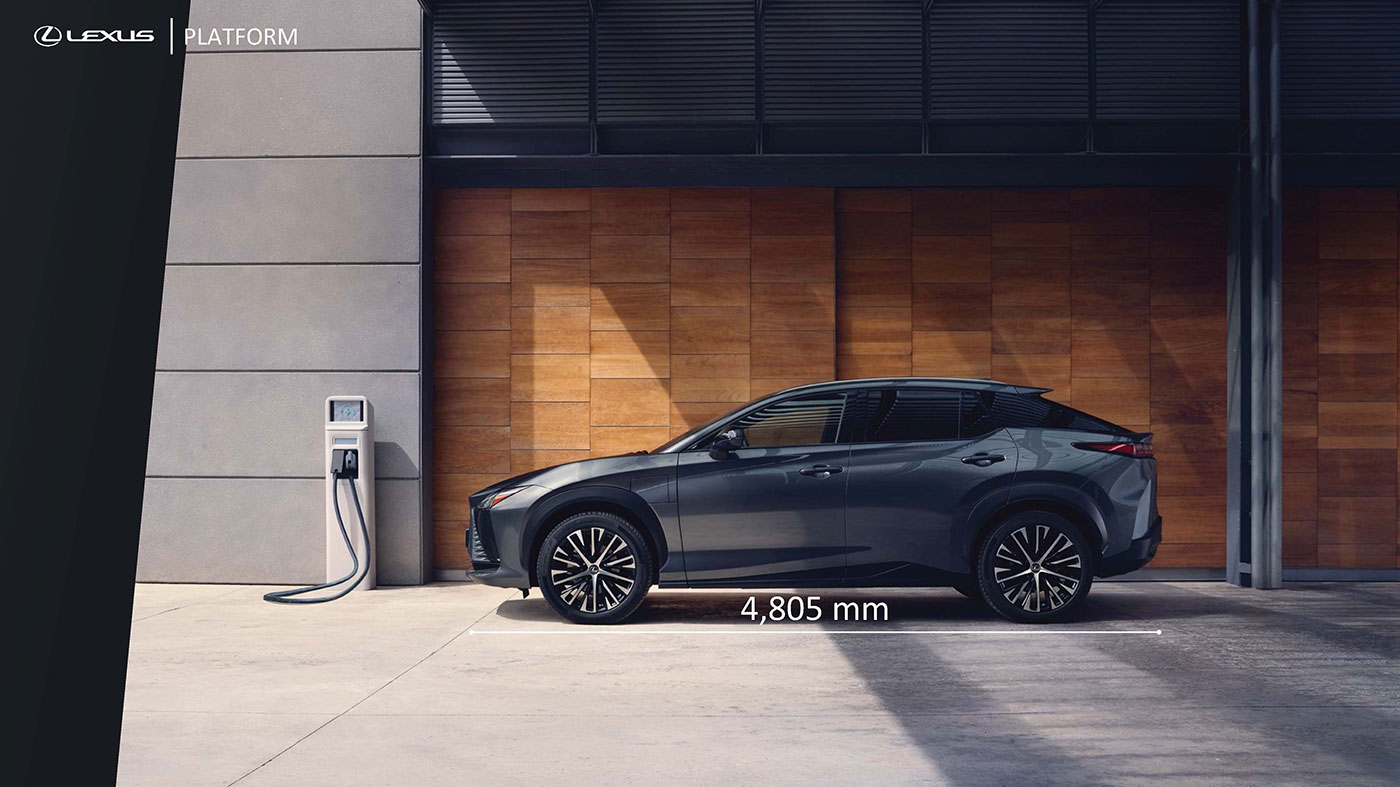

Engineers doubled down on rigidity, using structural adhesive, laser screw welding, and short-pitch welding throughout the body.
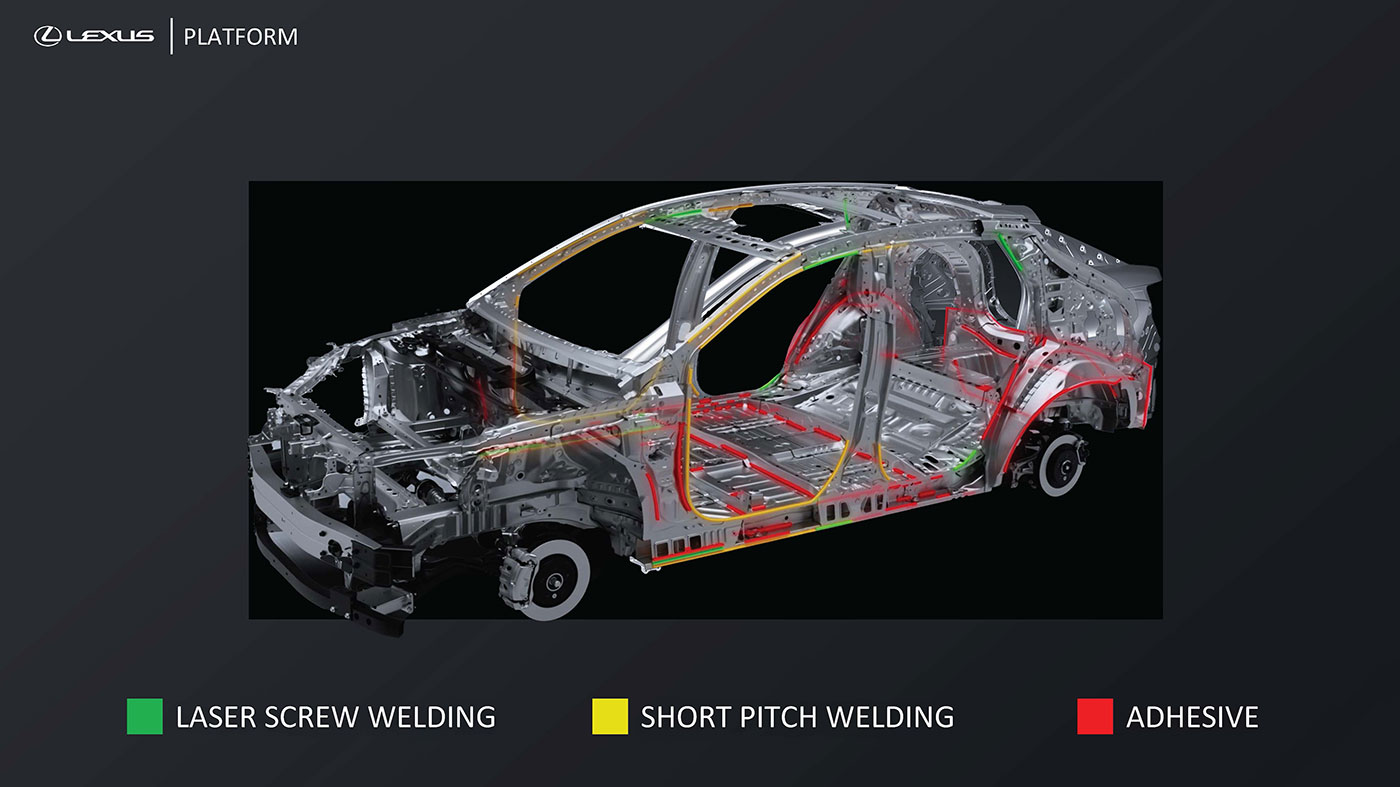
To counteract the weight of the battery, lightweight 1470 MPa steel was used for the roof reinforcement and parts of the front and center pillar. Some other weight savings: the hood is made of aluminum, and a moulded resin was used for the wheel arches and back door trim.
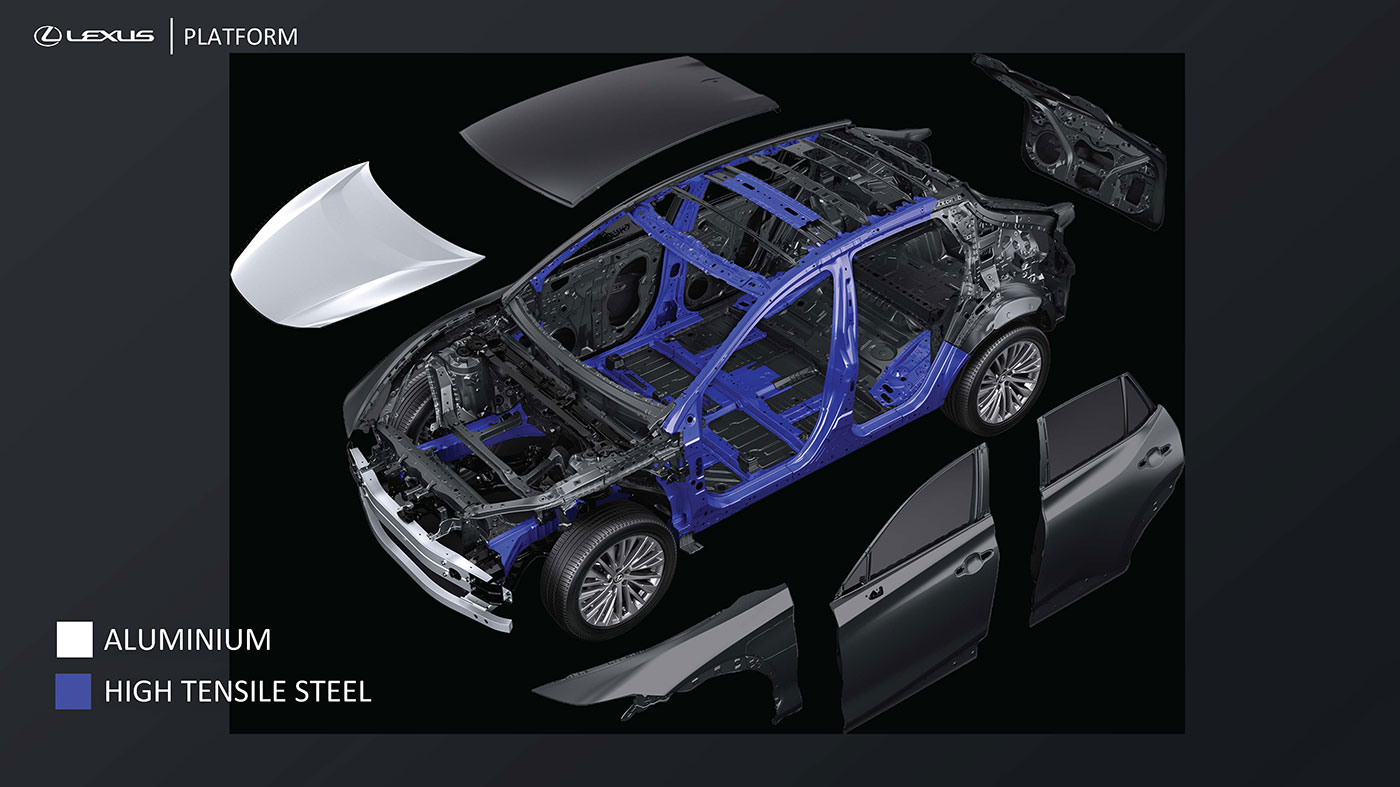
Controlling outside noise and vibration is a major consideration with a silent EV powertrain, and the RZ uses a subshell around the cabin and wheels to counteract the NVH. An all-round seal was also added to the hood to prevent mechanical noise from escaping the engine bay.
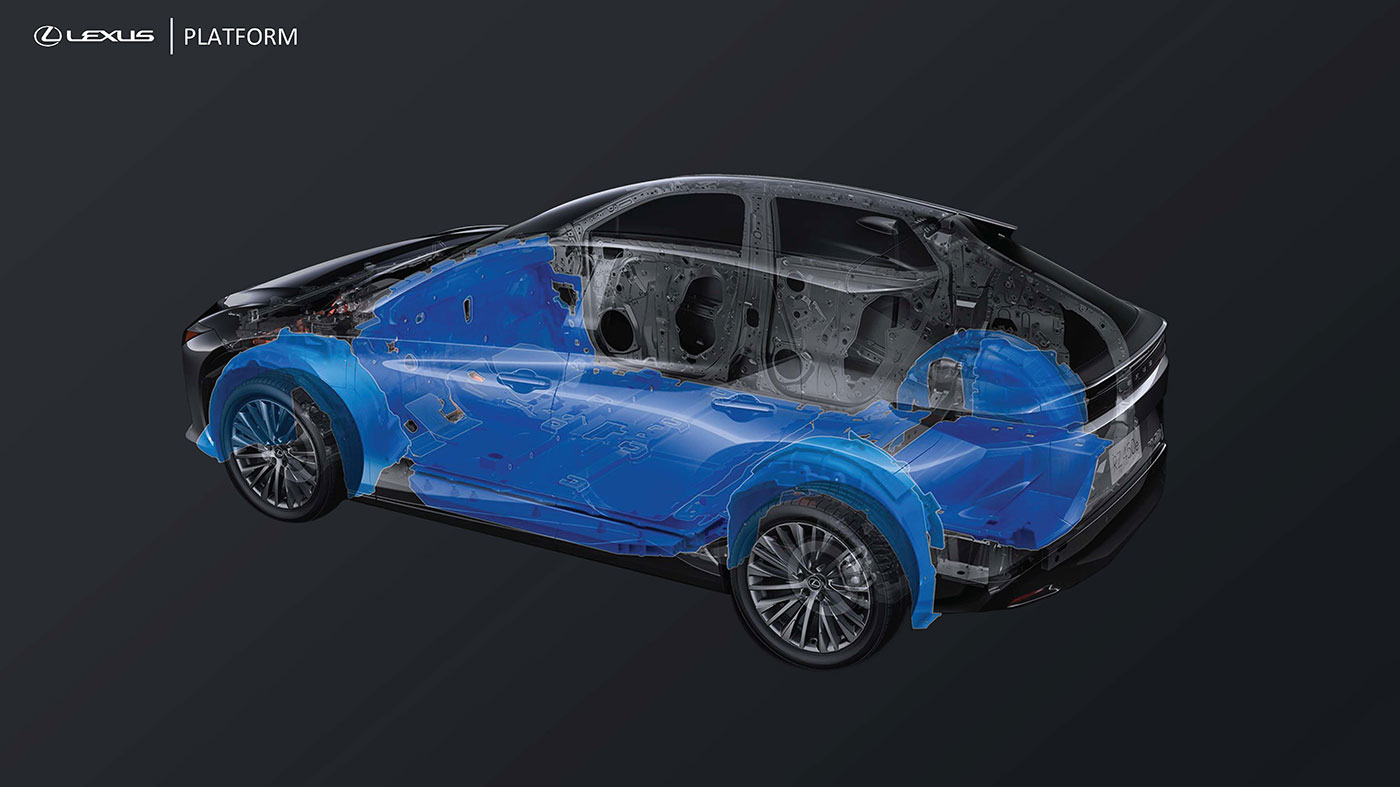
Powertrain
The RZ will debut the new Lexus e-Axle designed specifically for BEVs. Being an AWD vehicle, the RZ has a motor mounted at both the front and rear axle between the wheels — the front motor produces 150 kW and the rear motor produces 80 kW, for a combined maximum output of 230 kW.
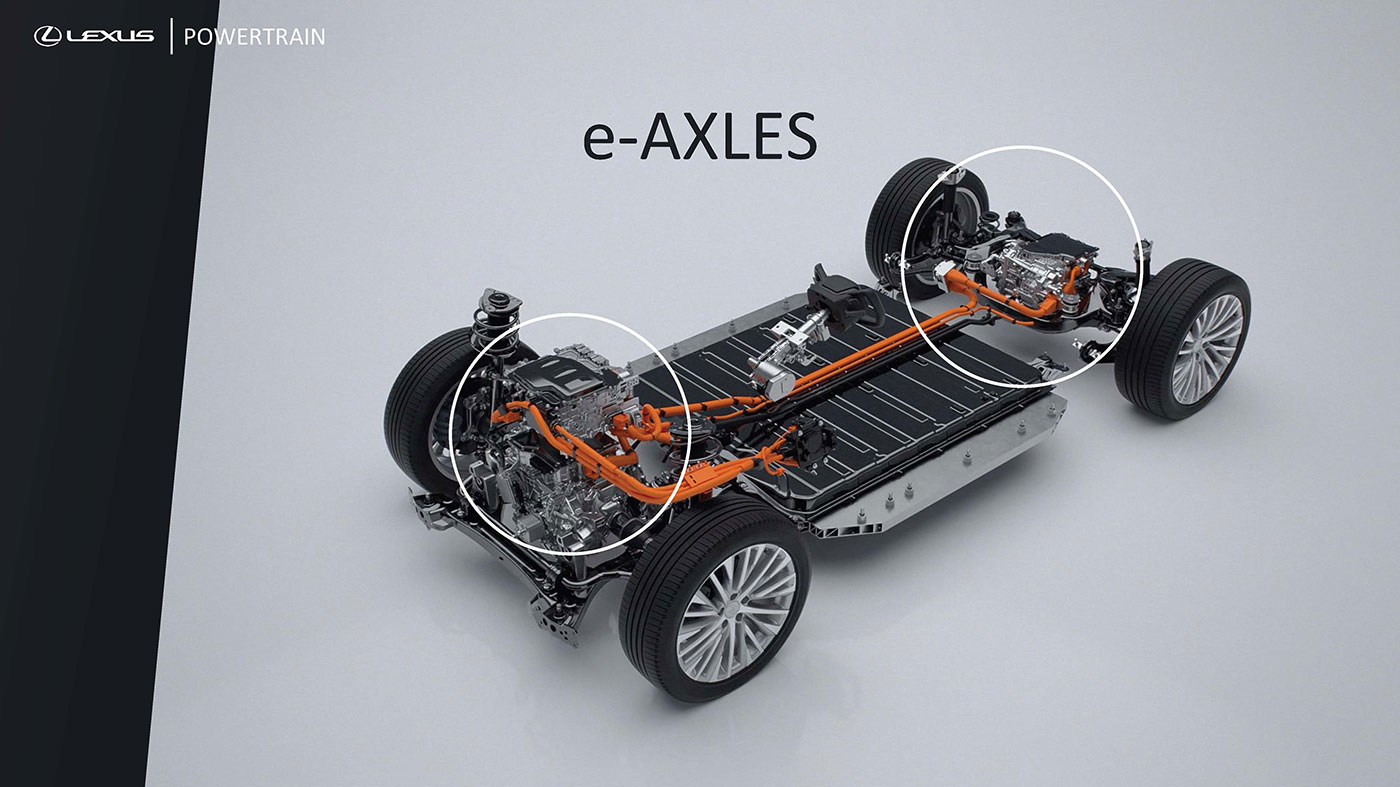
The e-Axle units contain both a transaxle and inverter, with an Energy Storage Unit (ESU) to handle the charging, power supply and power distribution functions. The motors have a 17,000 rpm rotation speed, and are located on a three-point aluminium mounting system integrated directly with the transaxle.
Lithium Ion Battery
The RZ battery stack sits under the cabin floor, forming a key piece of the vehicle’s structural frame and adding to the overall body rigidity. The entire stack is sealed in a reinforced shell to protect from scrapes and collisions.
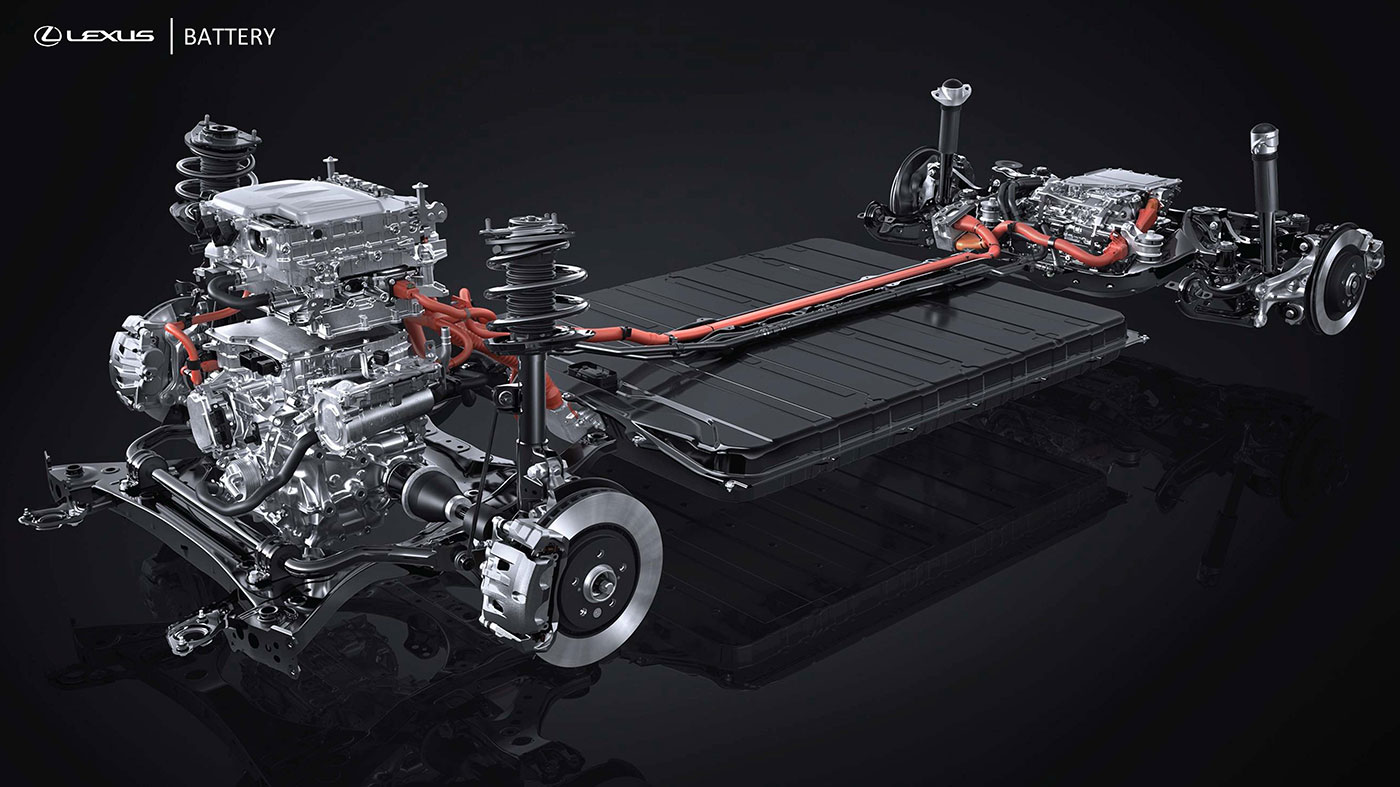
The battery stack is made up of 96 cells with a combined capacity of 71.4 kWh. Lexus guarentees the batteries will retain at least 70% of its charging capacity after 10 years, with an even more impressive caveat:
Lexus is confident however, given its long experience in battery technologies, that actual capacity at the point should be at least 90%.
Vehicle range is dependant on wheel size, with EPA estimates putting the RZ with 20-inch wheels at 196 miles of range and and the 18-inch wheels bumping that up to 220 miles (and for those looking to squeeze every last mile out of the RZ, it should be noted that the displayed range will show as 0 miles when the batteries reach 8% capacity).
The lithium-ion battery and the BEV system both use LLC coolant to maintain optimal performance temperatures, cooling from the bottom of the battery pack. The coolant is seperated from the batteries, with no direct contact. For colder temperatures, the system uses the HVAC heater.
Battery Charging
The RZ is equipped with a 11 kW on-board charger, and charging can be scheduled to use off-peak energy through the Lexus Link app. As for charge times, here’s a chart provided by Lexus USA:

DIRECT4 AWD System
DIRECT4 is the marketing name of the new Lexus AWD system, which uses ECU (Engine Control Unit) sensors to calculate the appropriate torque to all four wheels based on a range of factors, including vehicle speed, steering angle and G forces. Any adjustments in the front/rear torque bias can be made in milliseconds, making it faster than the more traditional AWD mechanical system.
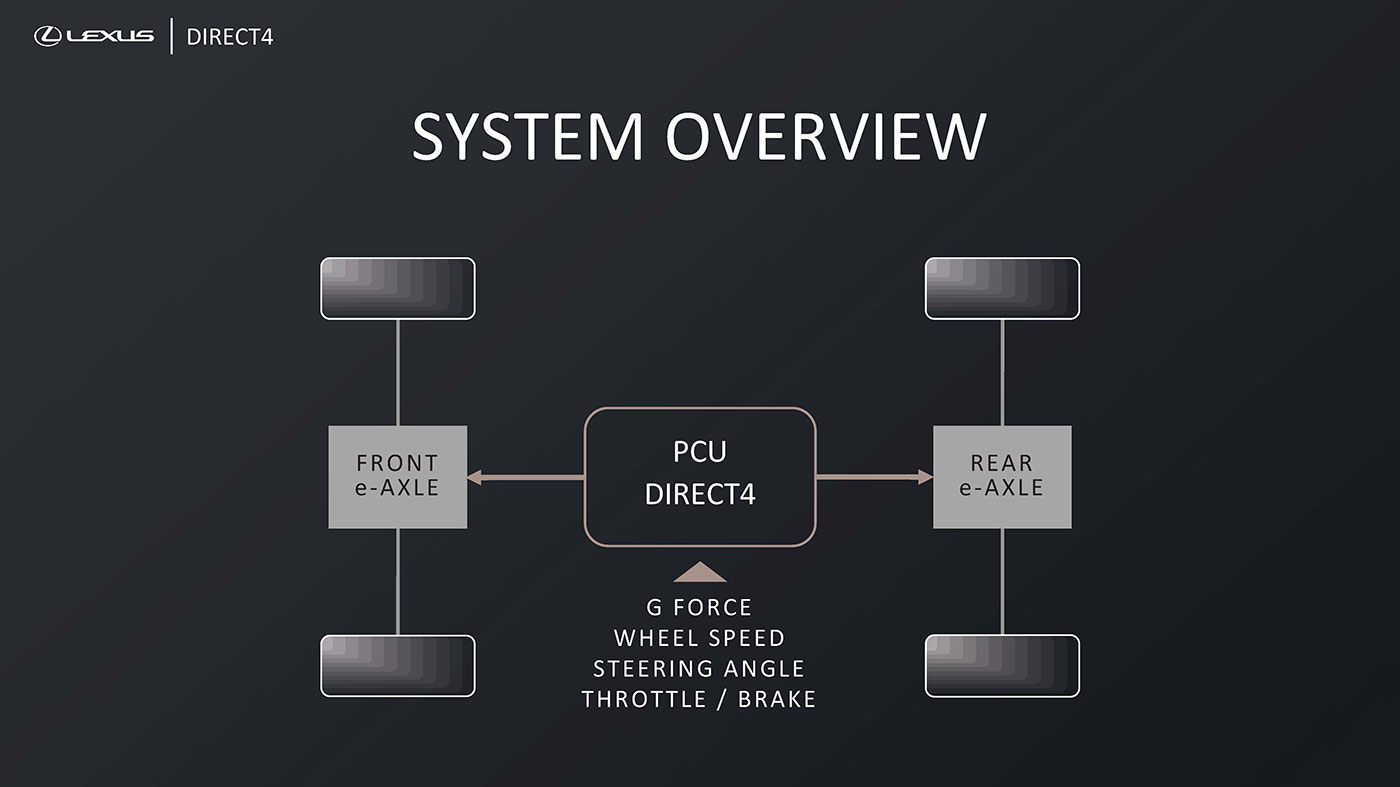
The variation in possible torque distribution is fascinating, here’s a chart Lexus provided that illustrates the possible permutations:

One Motion Grip
Lexus has reinvented steering, and they’re calling it One Motion Grip, or OMG for short (though you can expect a different name in the USA). Either way, OMG replaces the conventional physical connection between steering wheel and front axle with an electronic steer-by-wire system. It will take some time to reach the market, with Europe projecting a 2025 launch and the USA not specifying a date at all.
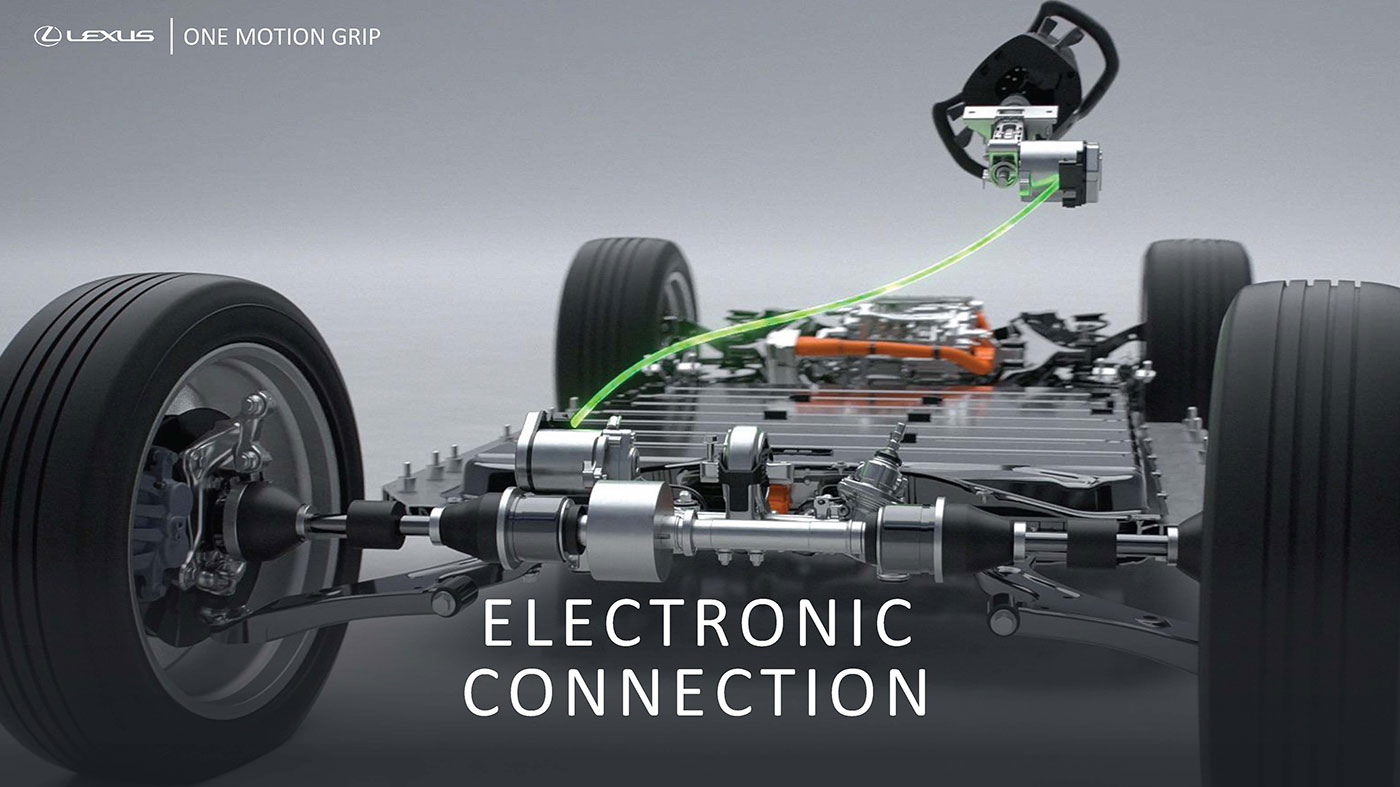
Continuing on with OMG, the system opted for a yoke-style design over the traditional circle.
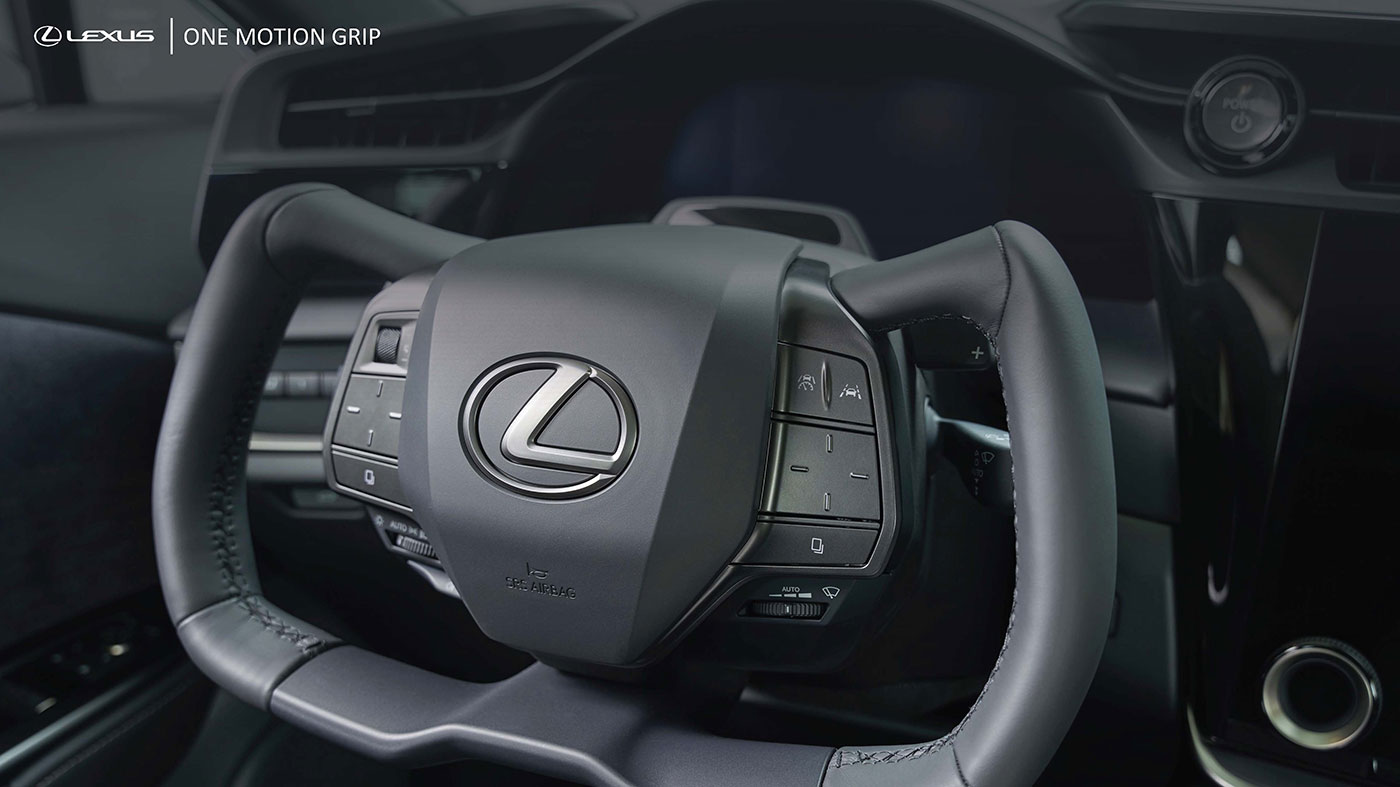
By changing the fundamental interface to vehicle control, Lexus engineers were able to create a curated driving experience — the RZ driver will feel less steering wheel sway when travelling over rough roads or when being buffeted by strong crosswinds. OMG eliminates the need for hand-over-hand steering, as the turning ratio adjusts automatically based on vehicle speed.
The instrument gauge cluster is also adjusted for the OMG steering wheel, setting higher and further back:
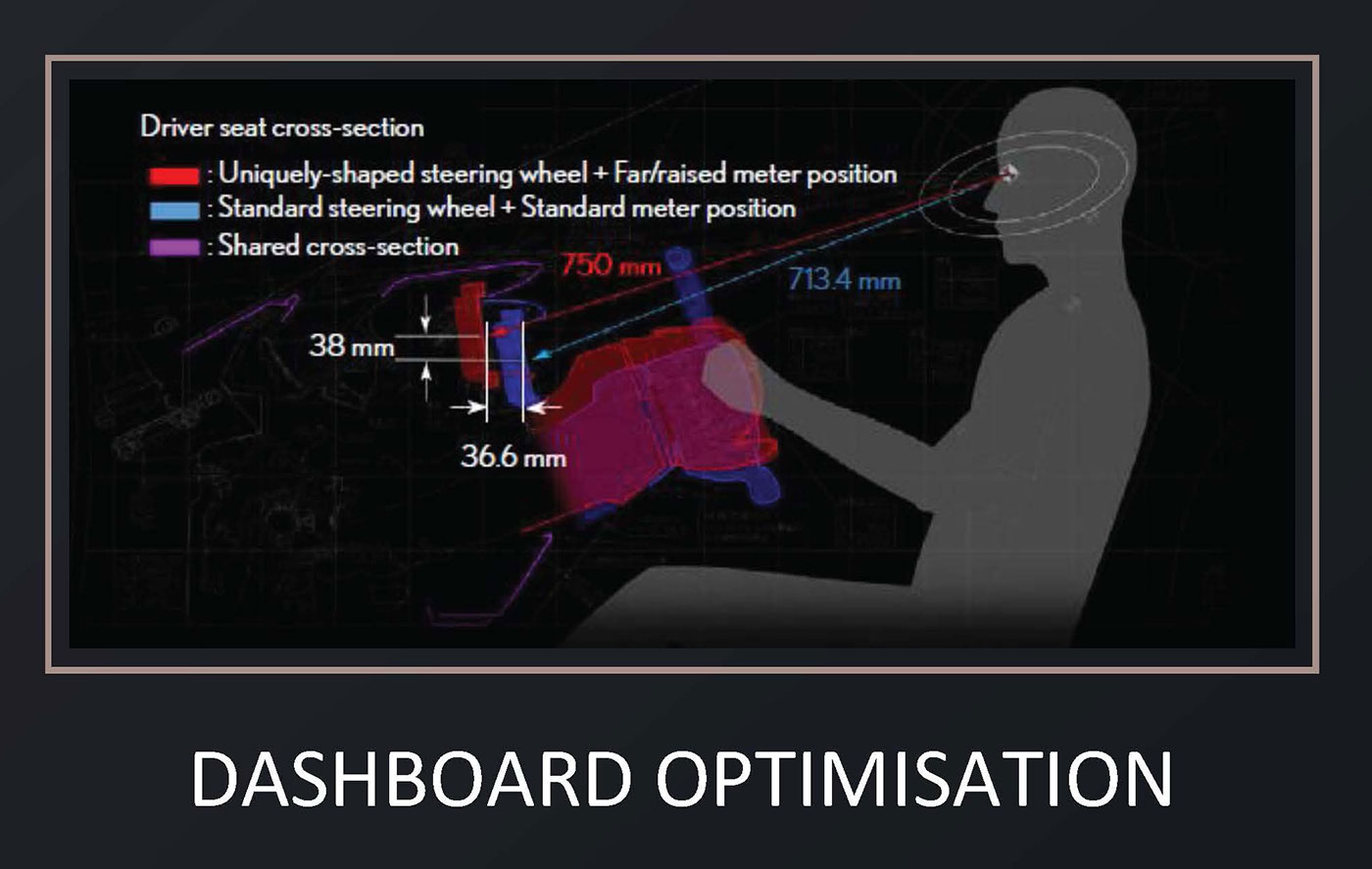
A final point on the OMG steering, the system has full reduncancy — from the press release:
There is also a fail-safe provision of processors and an emergency power supply that automatically engages should the system lose its primary power supply.
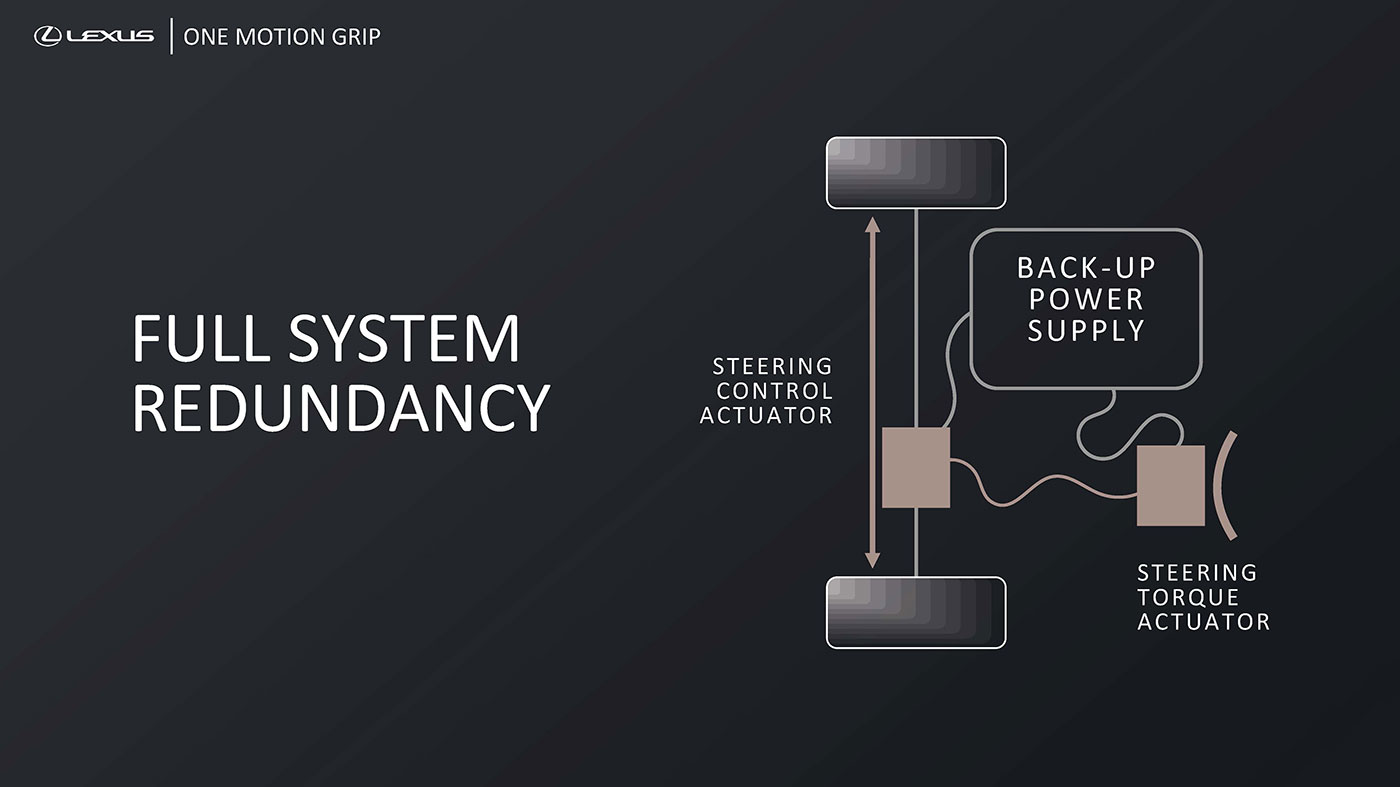
Braking
The RZ features an AHB-G braking system (Active Hydraulic Booster), which uses a high-performance pump motor for brakeforce distribution and independent front and rear pressure regulators for control.
A new technology called Vehicle Braking Posture Control will debut on the RZ, and it has two stages: during initial braking, the vehicle is programmed to pitch so the driver feels the deceleration, and when more brake pressure is applied, the system sends brakeforce to the rear wheels in order to reduce body lift.
Driving Modes
The RZ has four drive modes, and the first three are familar to any Lexus owner: Normal is a balance between effiency and performance, Sport mode bumps up the acceleration, and ECO mode reduces torque response and the air conditioning to conserve energy. Range is the fourth drive mode, and it’s brand new with the RZ (and all future EVs, presumably).
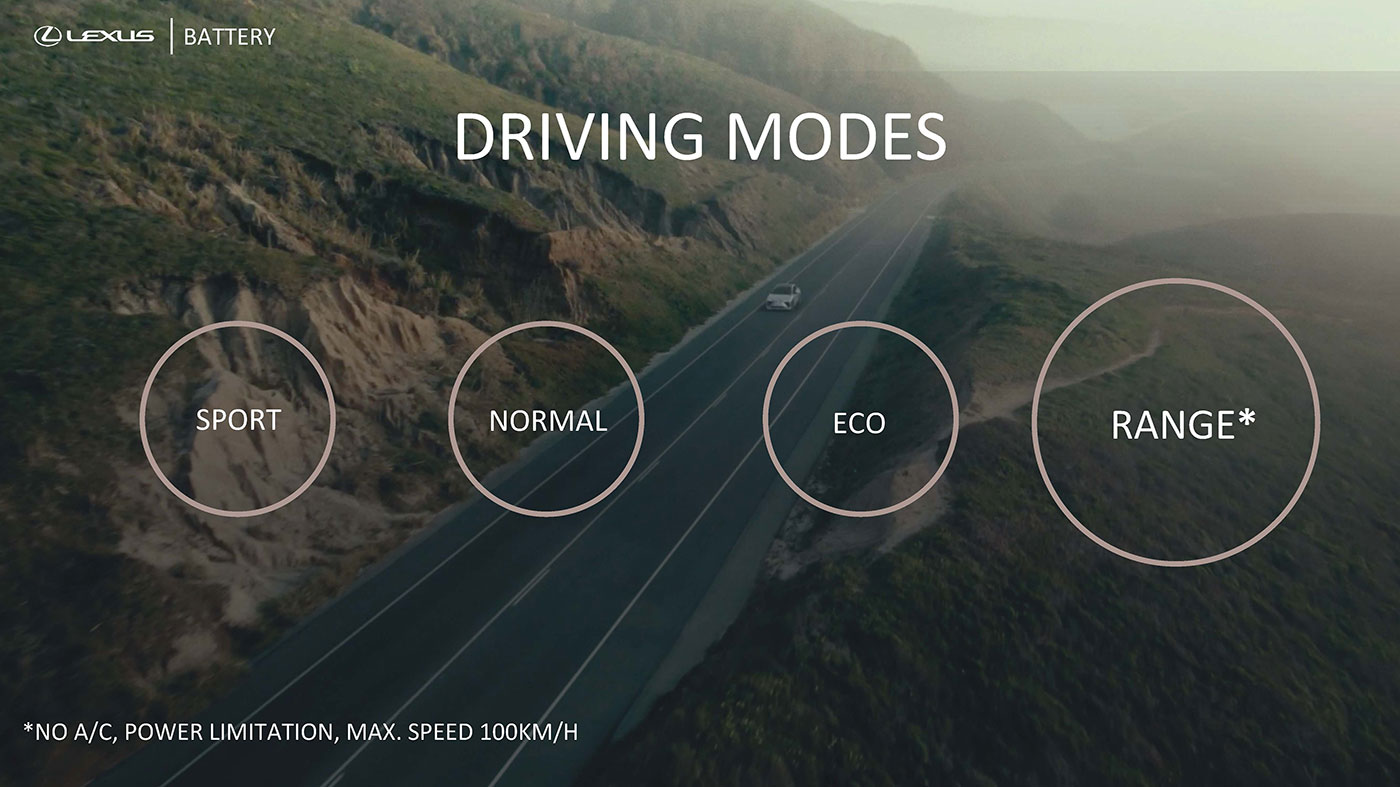
Specifically, Range takes ECO to the next level, completely turning off the air conditioning, reducing power consumption, and even restricting vehicle speed to 62 mph (100 km/h). Additionally, Range mode adjusts the balance of front/rear torque distribution — when in low torque situations (like cruising), only the rear motor is used.
Suspension
The front suspension uses MacPherson struts, with a double wishbone setup at the rear. Lexus also introduces new frequency-sensitive pistons in the shocks, which allows tuning dependant on the vibes given off by the road surface — softer in the high frequency range, harder in the lower range.
Exterior Colors
The RZ will be offered in these exterior colors: Caviar, Iridium, Cloudburst Gray, Eminent White Pearl and the brand-new light blue Ether. Two-tone color pairings of Ether & Black or Cloudburst Gray & Black are also available, with Copper Crest & Black being offered at a later date in North America.
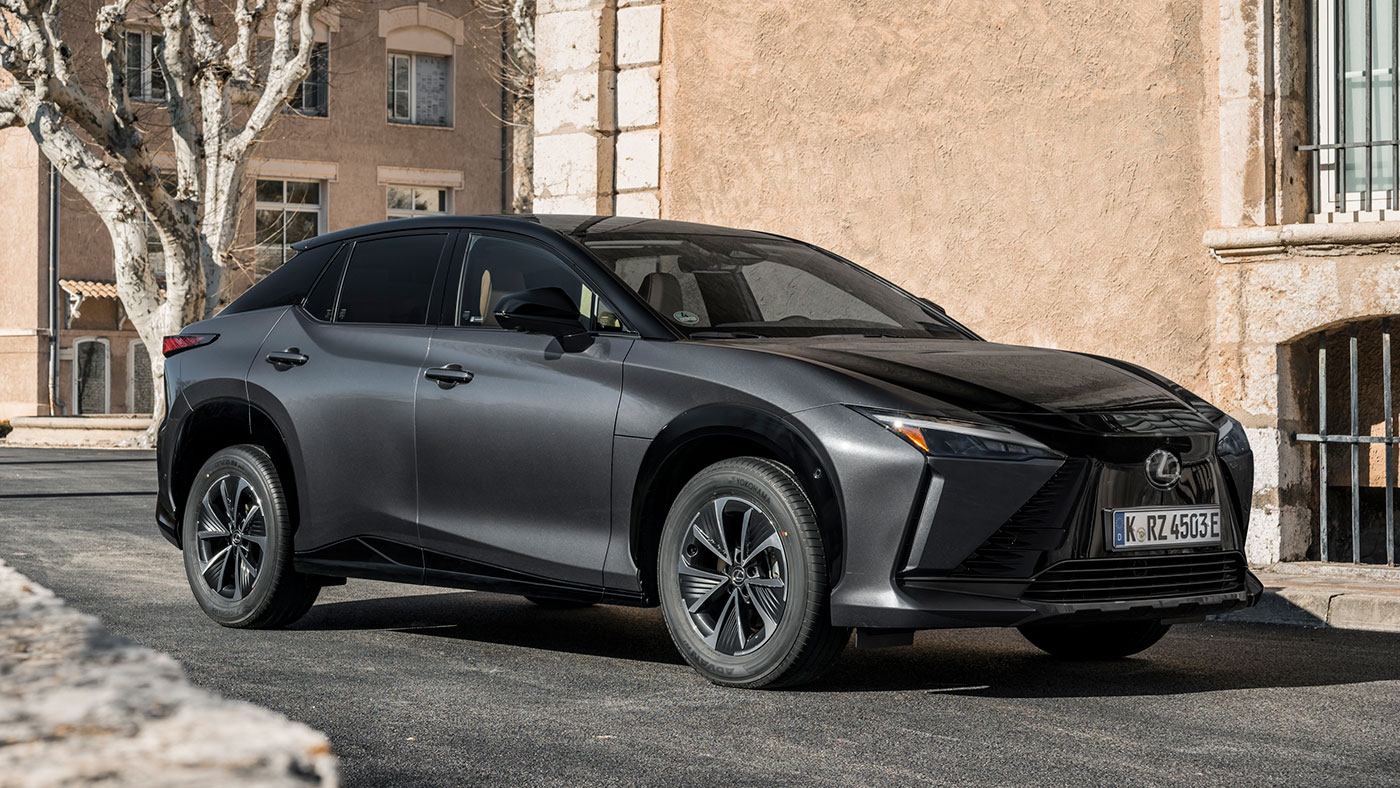
Ambient Lighting
The RZ comes standard with an ambient lighting system that allows for the customization of the color and brightness of each interior lamp. The RZ also features an illumination effect projected onto the door panels, which shifts in brightness and visiblity throughout the day.
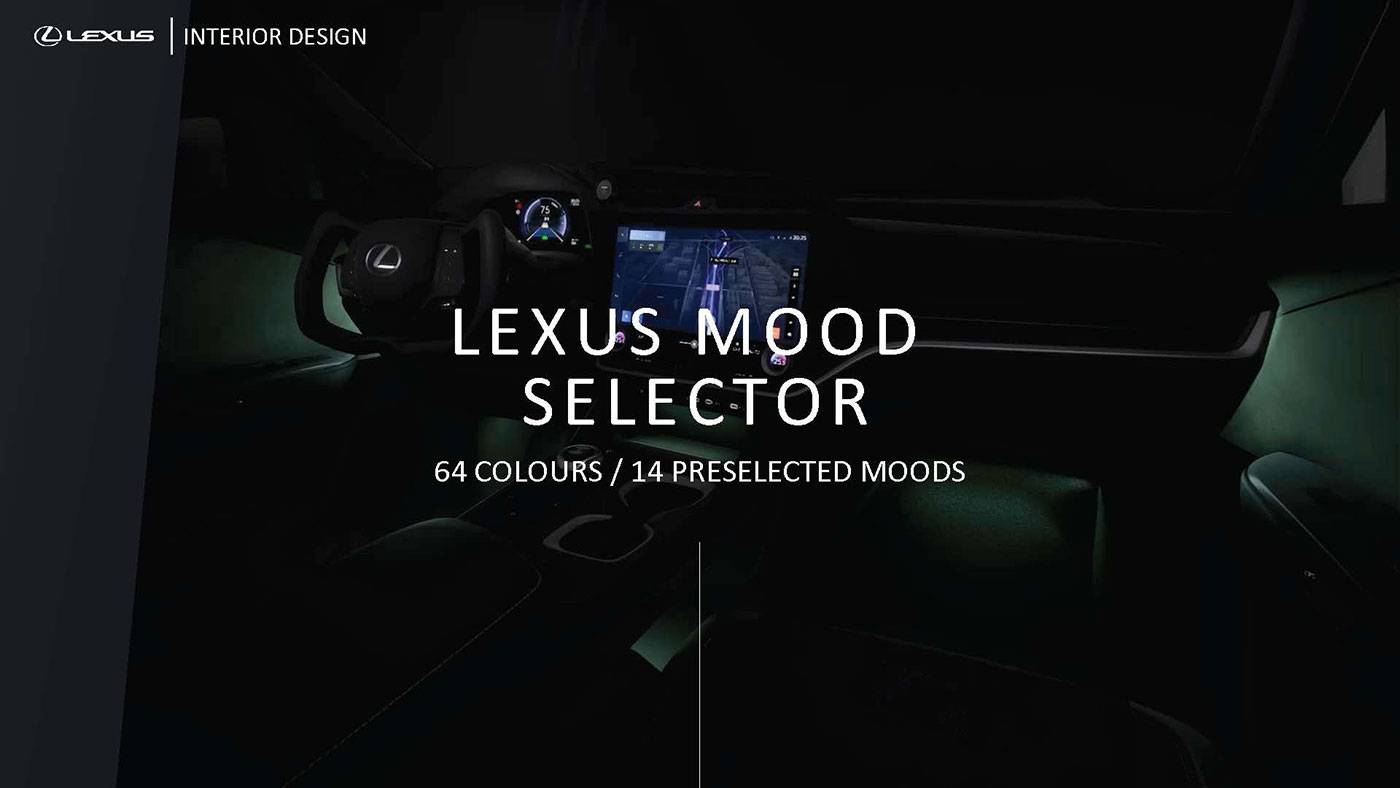
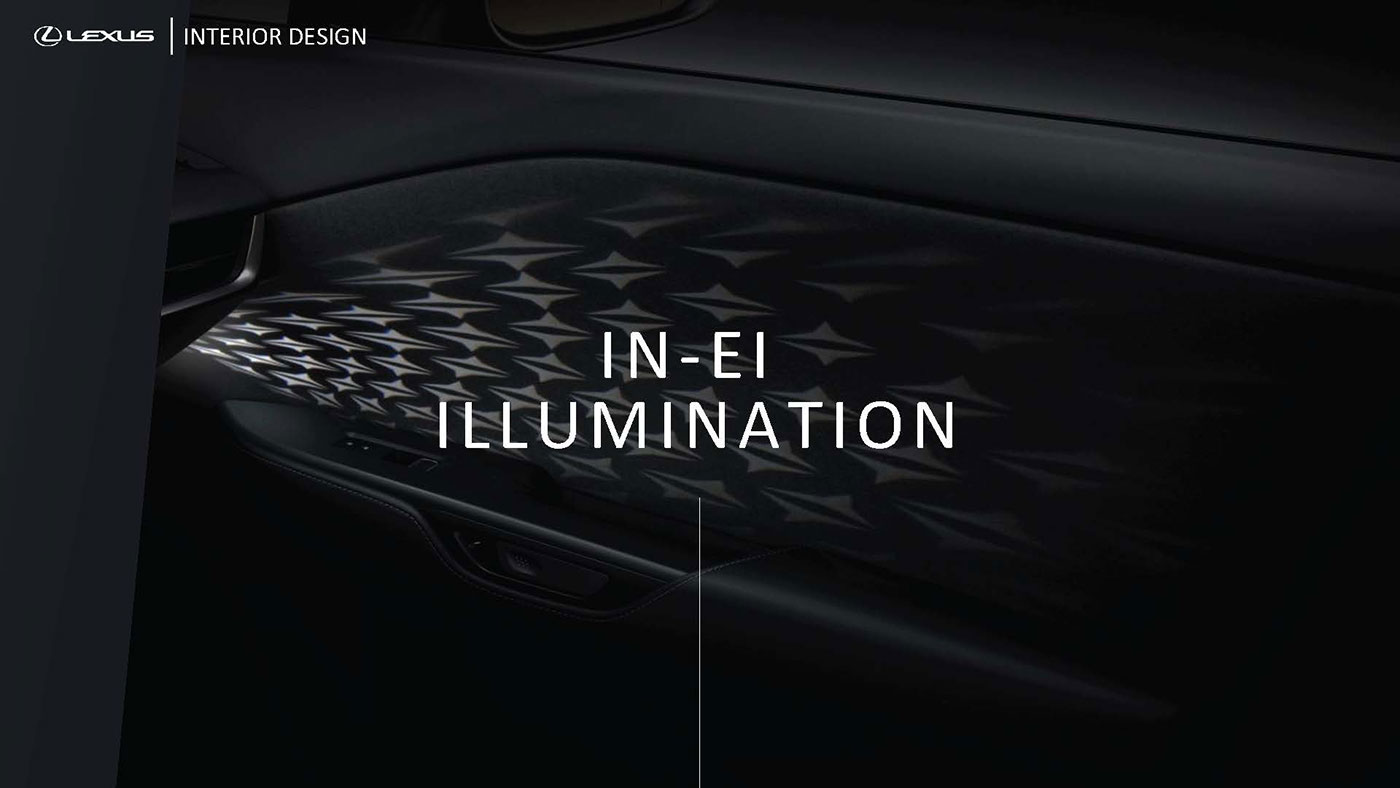
Dimmable Panoramic Roof
There’s an optional full-cabin panoramic roof with a low-e (low-emissive) coating on the glass that reflects infrared radiation and reduces radiant heat on sunny days. There’s also an electric dimming function which darkens the roof glass, eliminating the need for an integrated sunshade and creating more headroom as a result.
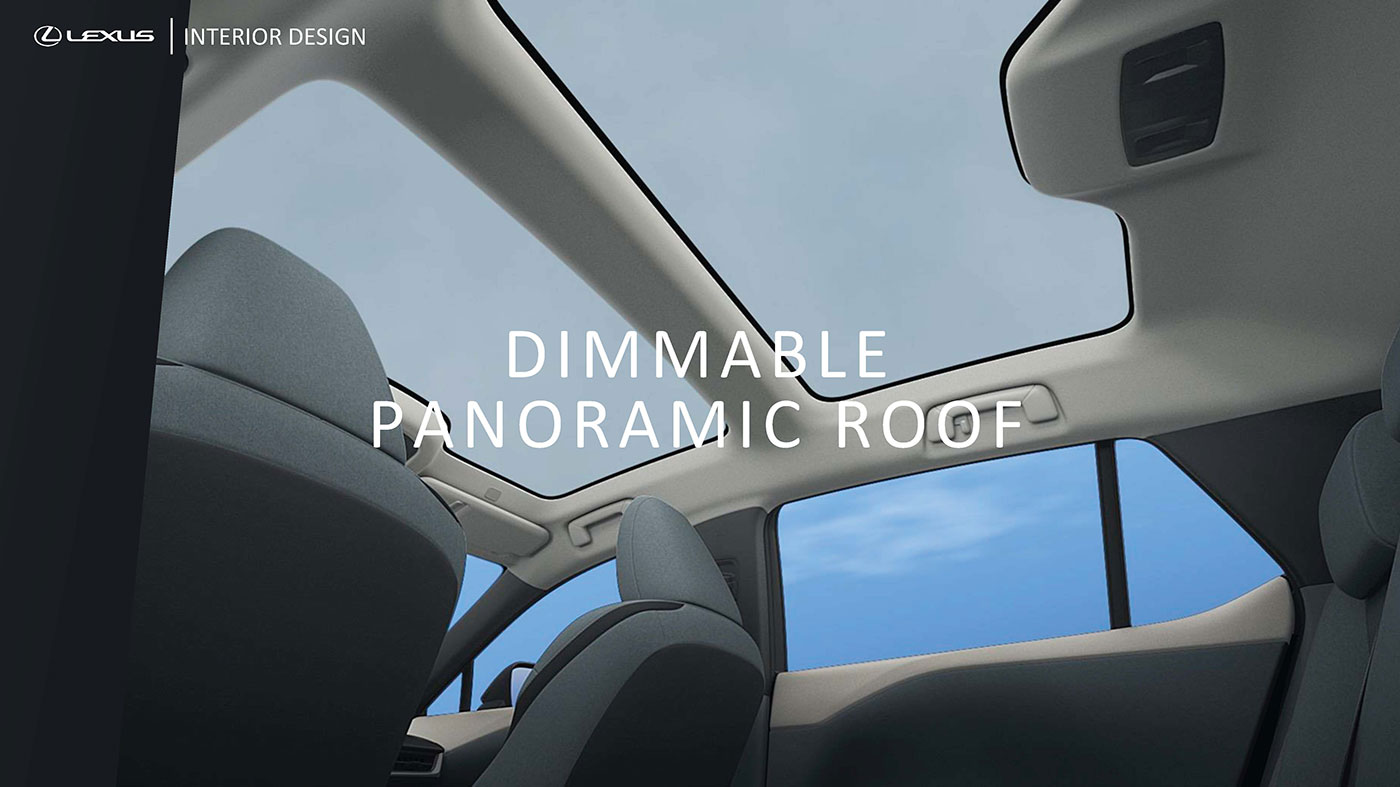
Radiant Heating
Radiant heaters hav been positioned at knee-level of the driver and front passenger, underneath the dashboard. These heaters use infrared radiation to heat the occupants, use around 8% less energy than convection heating, and feature silent operation. A safeguard is in place that automatically reduces the temperature upon contact with the heat plates.
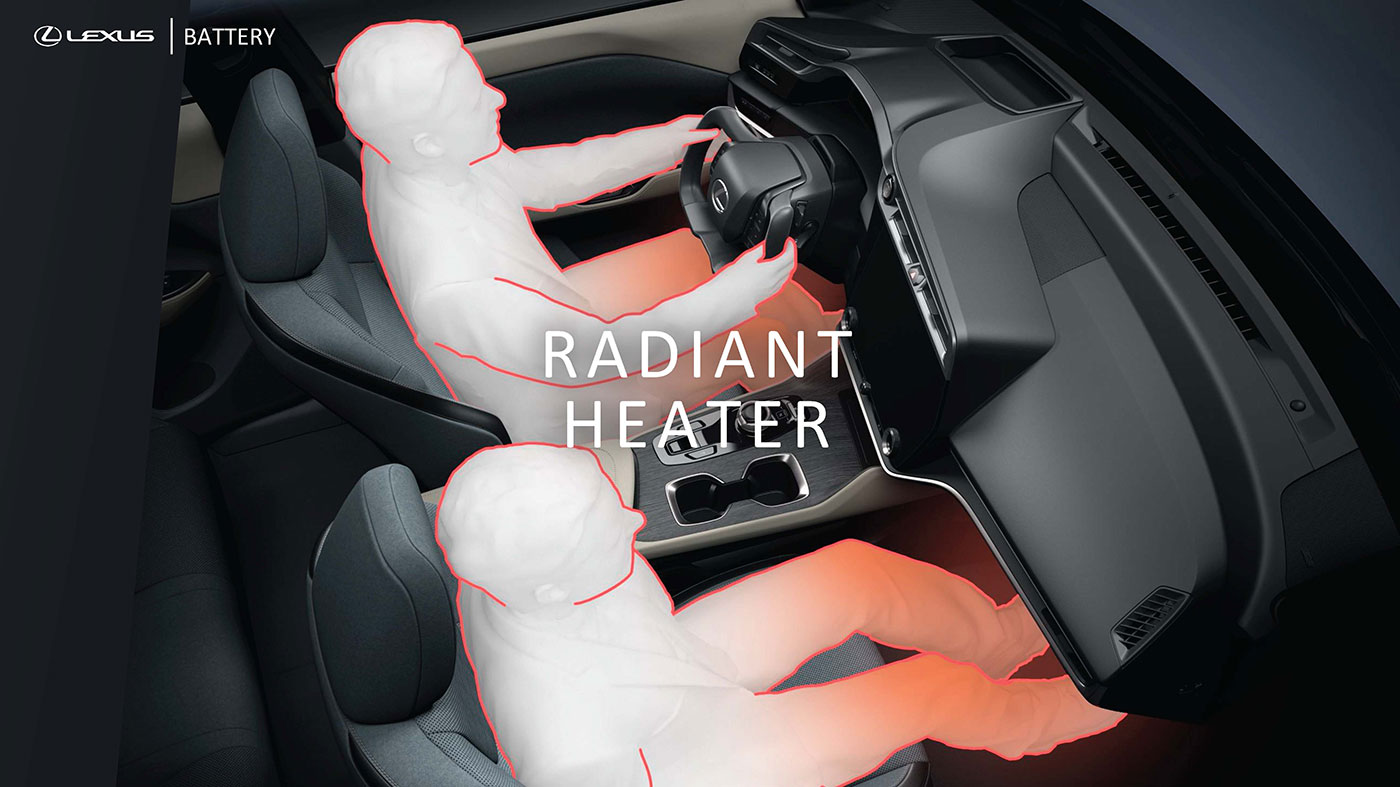
Multimedia System
The RZ comes standard with a 14-inch HD anti-reflective touchscreen for information, entertainment, navigation, air conditioning and access to vehicle settings. An on-board assistant is also part of the system, using the “Hey Lexus” keyword. This can be used to control the air conditioning and opening/closing windows, and can tell from what seat the command is coming from.
Audio System
RZ buyers will be able to upgrade the standard 10-speaker audio system to a 13-speaker Mark Levinson Surround Sound system. Central to the upgrade is a Harman discrete amplifier that can handle high-resolution sound sources (96 kHz/24-bit).
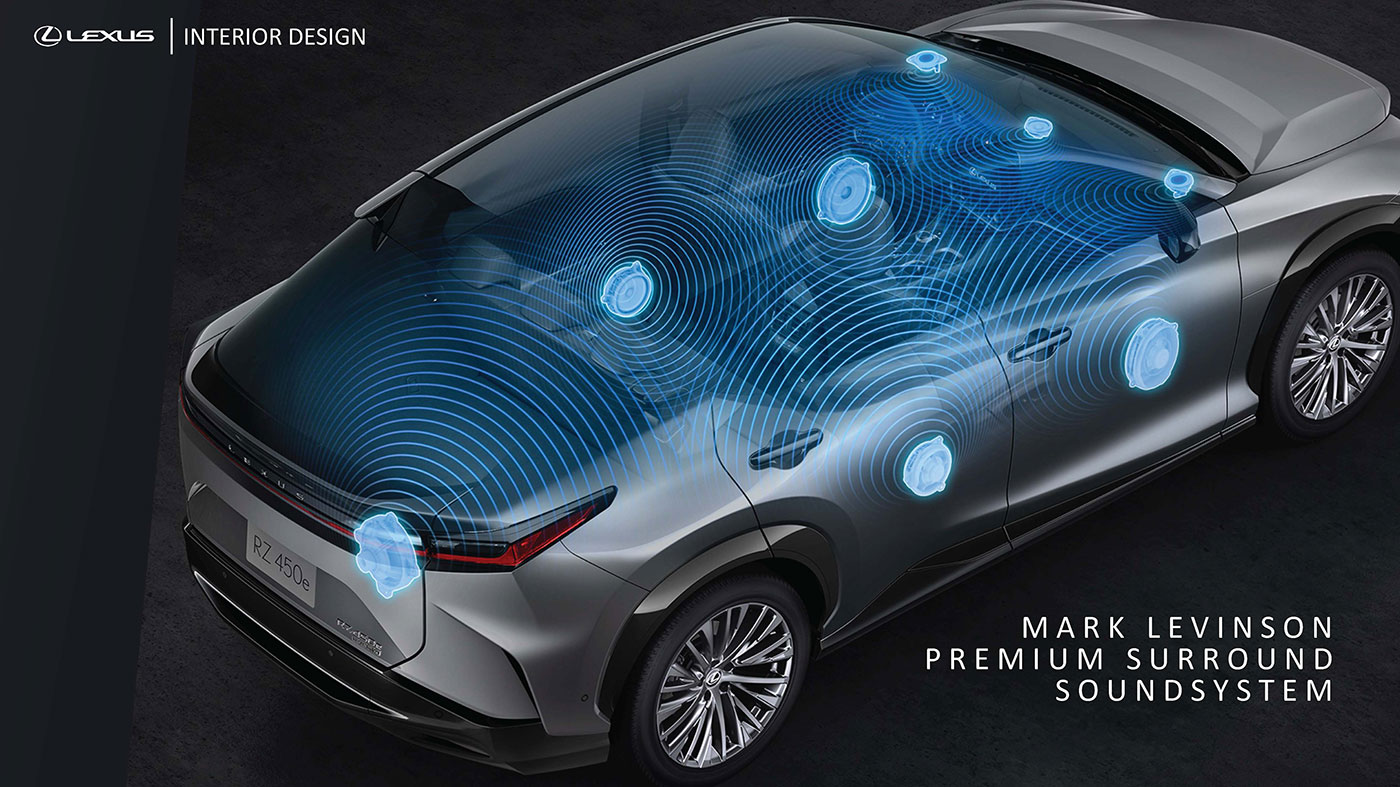
For those looking for an audiophile explanation, here’s the speaker layout: 9cm Unity speakers on the left, right and center on the instrument panel; 20.4 x 22.9cm woofers on the lower front doors; 9cm Unity speakers on the rear doors; and a 22.4 cm sub-woofer installed in the trunk hatch. Another note, the rear subwoofer uses a large neodymium magnetic circuit to accurately reproduce heavy bass frequencies.
As for device connectivity, there are three USB-C ports in the center console and two USB-C ports in the rear console (the Luxury package includes an actual AC power outlet in the rear).
Safety
A key component of the Lexus Safety System + is Proactive Driving Assist, which constantly scans the environment for a variety of hazards — pedestrians about to cross or walking along the side of the road, parked cars, cyclists — and will avoid any possible collision while still keeping the vehicle within its lane.
There’s also the Safe Exit Assist system, which disengages the door handles if the Blind Spot Monitor detects a cyclist or a vehicle.
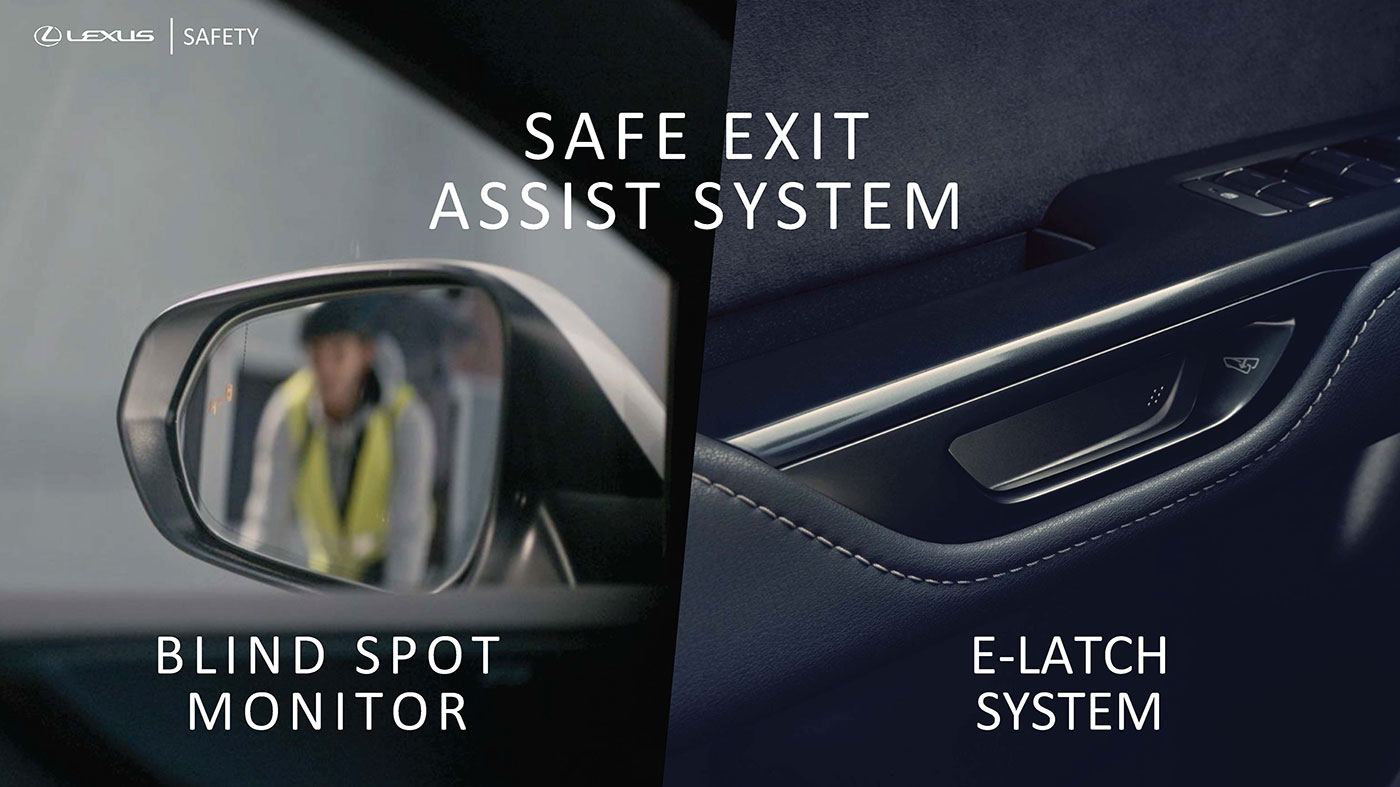
This ends the top-level technical preview of the Lexus RZ 450e, please check out our review of the new EV crossover.

